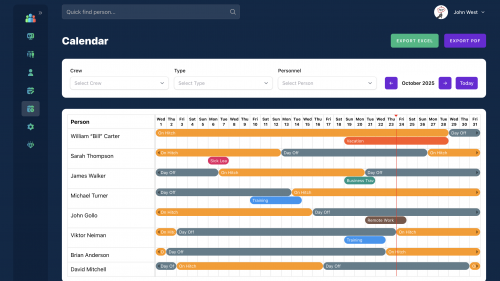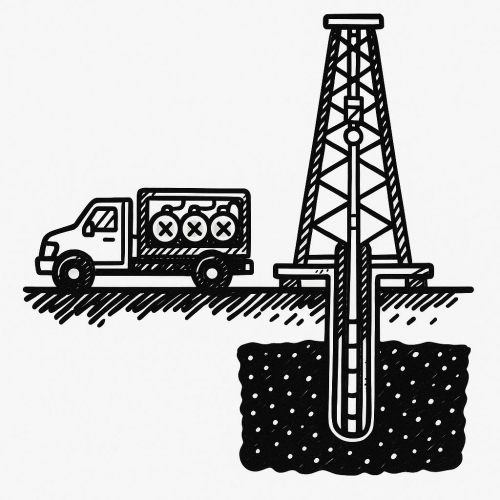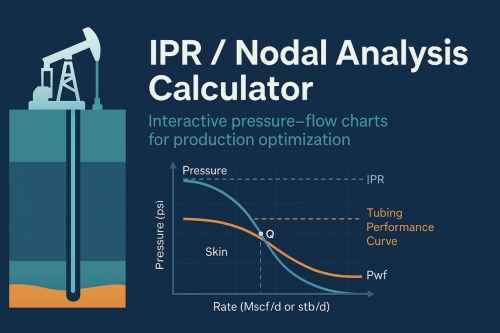What is a Bottom Hole Assembly?
A bottom hole assembly (BHA) is the lowest part of the drill string, extending from the bit to the drill pipe. It is a complex assembly of components that are designed to drill the well, control the wellbore, and provide the driller with information about the formation.
The BHA can consist of the following components:
- Drill bit: The drill bit is the component that actually breaks the rock. It is made of tungsten carbide or other hard materials and has a variety of shapes and designs to suit different drilling conditions.
- Drill collars: Drill collars are heavy-weight pipes that are used to add weight to the BHA. This weight helps to apply force to the drill bit and break the rock.
- Stabilizers: Stabilizers are used to keep the BHA in a straight line. They are typically made of steel and have fins or blades that help to grip the sides of the wellbore.
- Subs: Subs are short sections of pipe that are used to connect different components of the BHA. They can also be used to add features to the BHA, such as a mud motor or a logging tool.
- Jars: Jars are used to shock the BHA in order to free it if it becomes stuck. They are typically made of steel and have springs or other mechanisms that store energy.
The Design of a BHA
The design of a BHA is determined by a number of factors, including the type of rock being drilled, the depth of the well, and the desired rate of penetration. The BHA must be strong enough to withstand the forces of drilling, but it must also be lightweight enough to be efficiently moved up and down the wellbore.
The BHA is also designed to provide the driller with the desired amount of control over the wellbore. The stabilizers help to keep the BHA in a straight line, while the drill collars can be used to apply weight to the bit or to change the direction of the wellbore.
The Importance of a BHA
The BHA is a critical component of the drilling process. It is responsible for breaking the rock, controlling the wellbore, and providing information about the formation. A well-designed BHA can help to ensure a successful drilling operation.
Here are some of the benefits of using a BHA:
- Increased rate of penetration: A well-designed BHA can help to increase the rate of penetration by applying more force to the drill bit.
- Improved wellbore control: The stabilizers in the BHA help to keep the wellbore straight and prevent it from becoming crooked.
- Reduced risk of stuck pipe: The jars in the BHA can be used to shock the BHA free if it becomes stuck.
- Improved formation evaluation: The logging tools in the BHA can be used to collect information about the formation, such as its porosity and permeability.
The BHA composition for each type of drilling:
- Conventional drilling: This is the most common type of drilling and is used to drill oil and gas wells. The BHA for conventional drilling typically consists of a drill bit, drill collars, stabilizers, subs, and jars. The drill bit is typically a tricone bit, which has three cutting cones that rotate to break the rock. The drill collars add weight to the BHA to help apply force to the bit. The stabilizers help to keep the BHA in a straight line. The subs can be used to add features to the BHA, such as a mud motor or a logging tool. The jars are used to shock the BHA free if it becomes stuck.
- Directional drilling: This type of drilling is used to drill wells that deviate from the vertical. The BHA for directional drilling typically consists of a steerable drill bit, drill collars, stabilizers, subs, and a mud motor. The steerable drill bit has a mechanism that allows the driller to control the direction of the wellbore. The drill collars add weight to the BHA to help apply force to the bit. The stabilizers help to keep the BHA in a straight line. The subs can be used to add features to the BHA, such as a mud motor or a logging tool. The mud motor is a device that uses the flow of drilling mud to rotate the drill bit.
- Horizontal drilling: This type of drilling is used to drill wells that are horizontal or near horizontal. The BHA for horizontal drilling typically consists of a steerable drill bit, drill collars, stabilizers, subs, a mud motor, and a measurement while drilling (MWD) tool. The steerable drill bit has a mechanism that allows the driller to control the direction of the wellbore. The drill collars add weight to the BHA to help apply force to the bit. The stabilizers help to keep the BHA in a straight line. The subs can be used to add features to the BHA, such as a mud motor or a logging tool. The MWD tool is used to collect information about the formation, such as its depth and resistivity.
- Underbalanced drilling: This type of drilling is used to drill wells in formations that are undersaturated with fluids. The BHA for underbalanced drilling typically consists of a special drill bit that is designed to create a low-pressure zone around the bit. This low-pressure zone helps to prevent the formation fluids from entering the wellbore. The BHA may also include a mud motor and a flow control valve.
- Seismic while drilling: This type of drilling is used to collect seismic data while the well is being drilled. The BHA for seismic while drilling typically consists of a special drill bit that has a seismic sensor in the center. The seismic sensor collects data about the formation as the bit rotates. The BHA may also include a mud motor and a flow control valve.
These are just a few examples of the BHA compositions for different types of drilling. The specific composition of the BHA will vary depending on the specific drilling conditions.

%20(1).png)



